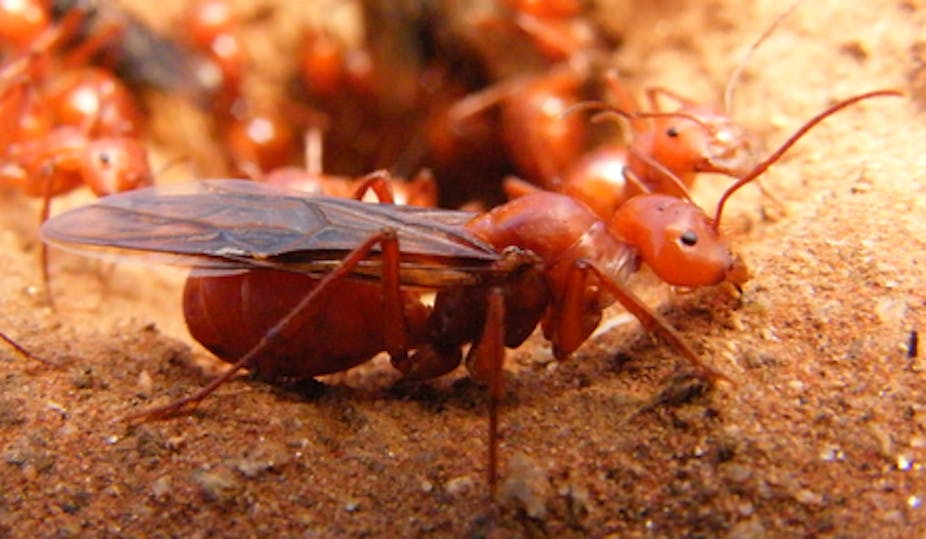
Can an ant’s strategy for moving around be useful for building robots with autonomous navigation?
Working with experts in the field of artificial intelligence, we have just begun to explore this possibility.
For ants, as with other insects that live in complex societies, the ability to navigate effectively is essential for the survival of the species.
My research team at Macquarie University has been looking at the red honey ant Melophorus bagoti, which is found over vast tracts of Central Australia.
Ants, as with the majority of insects, can keep track of the straight-line distance and direction to their home as they travel.
To a certain degree, this involves ants adding up each step they take, all the while charting the direction they’ve travelled, so that a “home vector” can be maintained. This process does not rely on visual cues and is known as “path integration”.
But they don’t rely solely on path integration because certain errors routinely accumulate as they travel – errors that can’t be corrected, that get worse as the journey continues.
The upshot? Ants also learn to use surrounding visual cues.
As humans, with sophisticated eyes at the front of our heads, it makes sense to look for specific landmarks, remember them, and use them for navigation.
But ants, with much poorer eyes that view a wide swathe of the panorama, seem to take in their entire surrounds.
Red honey ants need only an outline of the skyline, a record of how prominent objects standing on Earth are, to find their way around.
As part of our research, we reproduced the skyline surrounding a feeder with black cloth and found the ants followed this.
We captured individual ants after they’d grabbed a bit of cookie and were on their way “home”, and plonked them in the middle of the cloth silhouette of the skyline.
The ants headed off in the direction that would have led them home had the skyline been real.
For the ant, this skyline silhouette was as good as a compass.
How this will help robots
Our research so far, and the collaborative discussions we’ve had with the appropriate experts, seems to suggest this type of skyline navigation could be used in artificial intelligence.
Because their somewhat simplified mode of navigation (when compared with humans) removes the need for detailed visual cues, ants could inspire autonomous navigation in robots.
An obstacle to this type of navigation thus far has been the difficulty, from a robot’s point of view, of interpreting, and therefore traversing, visually-cluttered landscapes. Think about a city park; think about the average office.
Using these real-life techniques to create artificial intelligence, a process known as “biomimicry”, has real potential for engineers.
Creatures such as ants might be small and simple but there is plenty we can learn from our small-brained distant cousins.

